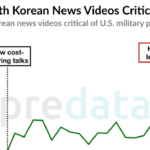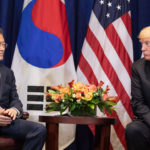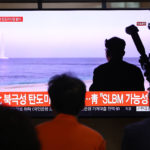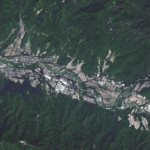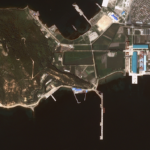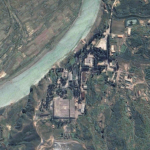November 26, 2019, by Victor Cha, Eric Falcon and Bryce Pedersen—
Predata signals suggest a significant perception gap emerging between the U.S. and South Korea. First, South Koreans are more focused on the financial burden of the U.S. military presence than on the positive security benefits it provides. Second, U.S. demands for $5 billion in cost-sharing are generating the highest ever levels of social media and video commentary critical of U.S. forces in Korea.
November 22, 2019, by Victor Cha and Richard Armitage—
The 66-year alliance between the United States and the Republic of Korea is in deep trouble. The U.S.-China trade war, the South Korean government’s quiet leaning toward Beijing and President Trump’s transactional view of alliances have created a unique constellation of forces. The result could be a premature withdrawal of U.S. troops from the peninsula at a time when North Korea’s nuclear threat and China’s regional dominance grow unabated.
November 14, 2019, by Joseph S. Bermudez Jr., Victor Cha and Dana Kim—
Recent satellite imagery from November 2019 shows the presence of four specialized railcars that have been associated with the movement of radioactive material in the past. The last observed movement of these railcars by Beyond Parallel was in April 2019. It is unclear whether the railcars are being used for the outbound shipment of irradiated liquid or solid waste, disassembled but contaminated equipment or the movement of fissile material to facilities outside the Yongbyon area. A less likely alternative is the inbound shipment of radioactive material from a facility outside the Yongbyon area.
October 17, 2019, by Joseph S. Bermudez Jr. and Victor Cha—
Analysis of satellite imagery of the Punggye-ri Nuclear Test Facility acquired during 2019 and more specifically on September 23rd and October 9th, 2019 shows the facility in caretaker status, likely being maintained by security personnel. While there is no evidence of current efforts to restore any of the nuclear test portals, several observations lead us to believe the facility has not been permanently disabled and that the detonations in May 2018 are not necessarily irreversible.
October 9, 2019, by Joseph S. Bermudez Jr., Victor Cha and Dana Kim—
The October 2, 2019 Pukguksong-3 submarine-launched ballistic missile (SLBM) test launch has raised concerns over the forthcoming launch of North Korea’s first true ballistic missile submarine (SSB) as described in the Beyond Parallel Snapshot, which was published the same day.
October 2, 2019, by Joseph S. Bermudez Jr., Victor Cha and Dana Kim—
Around 7:11 am on October 2 (KST), North Korea launched what may have been a submarine launched ballistic missile (SLBM) from waters northeast of the Wonsan, Kangwon Province area into the sea between Korea and Japan. The last Beyond Parallel report on the Sinpo South Shipyard indicated the possibility of ongoing preparations for a launch.
September 6, 2019, by Joseph S. Bermudez Jr. and Victor Cha—
New CSIS Beyond Parallel imagery shows the undeclared Kumchon-ni missile operating base. This is the first comprehensive public description of the base. During wartime, it is reportedly tasked with striking southern Japan and, to a lesser degree, throughout South Korea.
August 28, 2019, by Joseph S. Bermudez Jr. and Victor Cha—
New Beyond Parallel imagery (August 26, 2019) of Sinpo South Shipyard suggests circumstantial evidence of the construction of a new ballistic missile submarine and preliminary evidence indicates possible preparations for a test... New Beyond Parallel imagery (August 26, 2019) of Sinpo South Shipyard suggests circumstantial evidence of…
August 22, 2019, by Victor Cha—
The South Korean government announcement of its intention not to renew the General Security of Military Information Agreement (GSOMIA) represents escalation of the Japan-Korea dispute after each side removed the other from preferential trading arrangements (so-called "whitelists").
August 21, 2019, by Joseph S. Bermudez Jr. and Victor Cha—
The Pakchon Uranium Concentrate Pilot Plant is one of only two declared and known uranium concentrate plants in North Korea (Pyongsan Uranium Concentrate Plant at Pyongsan is the other). This facility was used for Yellowcake production at least through the mid-1990s, and therefore would require inspection under any new U.S.-DPRK denuclearization declaration and agreement as it has not been subject to international inspection for over 25 years since IAEA visits to the site as part of the Full Scope Safeguards Agreement process in 1992.
